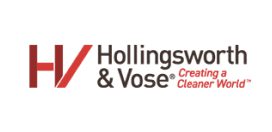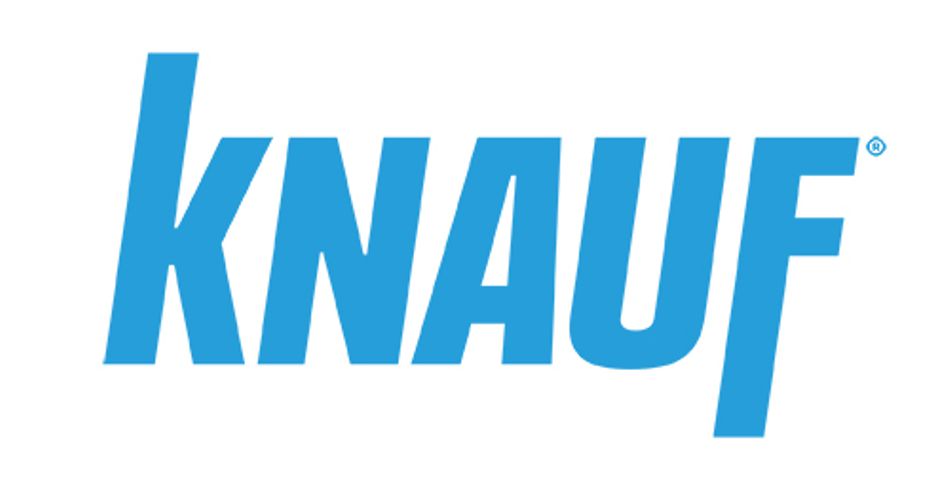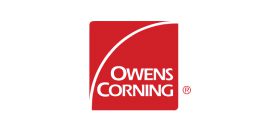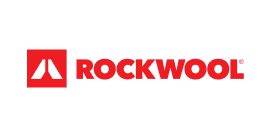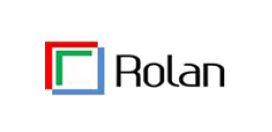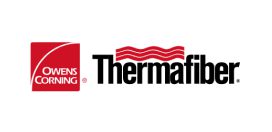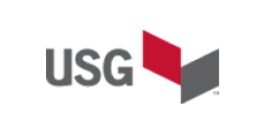Carbon Payback Scenario Analysis
–+ICF carried out an energy and carbon modelling study to analyze the potential use-phase emission reductions realized through the installation of building envelope insulation for residential and commercial new construction. The study focused on one residential prototype: single-family detached home, and six commercial prototypes: midrise apartment building, medium office, retail strip mall, primary school, secondary school, and warehouse.
Setting the Record Straight: Insulation and Low Carbon Buildings (N170)
–+This guide aims to correct misleading carbon claims made by some cellulose and wood fiber insulation manufacturers. It highlights why commonly available, cost-effective fiberglass insulation is among the best building materials for low-carbon construction. The guide contains data from recent reports that examine the carbon impacts of various insulation materials during the production stage, use phase, and considerations for the end-of-life cycle for insulation products. By offering transparency and accurate citations, the analysis presented here brings clarity to the topic.
Passive House Construction with Fiberglass and Mineral Wool (N152)
–+This guide provides an overview of passive house construction, compares net zero, code-built, and passive house construction, and presents a case study of one Colorado architect who designed and built his own home to the passive house standard using fiberglass and mineral wool insulation.
Building Design & Construction White Paper (NAIMA039)
–+In this white paper, the editors of Building Design & Construction offer a brief history of green building; present the results of a specially commissioned survey of our readers; and analyze the chief trends, issues, and published research, based on interviews with dozens of experts and participants in green building.
The White Paper concludes with an “Action Plan,” a set of recommendations designed to encourage further dialogue about sustainable development.
Building Design & Construction White Paper: Progress Report on Sustainability (NAIMA041)
–+This paper follows up on the recommendations made in the 2003 white paper by the same group.
Included is a progress report on the 2003 action plan and new recommendations for advancing green building.
Building Insulation: A Performance Comparison (BI502)
–+Today’s home builder is striving to construct a home that will minimize the impact on the environment and provide comfort, convenience and cost savings for the home owner.
This piece compares the most common insulation selection criteria for fiberglass insulation, cellulose insulation, rock and slag wool insulation, cotton insulation and spray foam insulation. Comparison data includes information on thermal performance, fire safety, moisture absorption, settling, recycled content, product testing and more.
Energy Efficiency Through Insulation: The Impact on Global Climate Change (NAIMA024)
–+Paper that presents an overview of the current and potential energy and environmental benefits that result from fiberglass and mineral wool insulation.
Information presented is based on studies of insulation savings in the U.S., Europe and Australia. The paper was presented at the Second United Nations’ Climate Change Convention in Geneva in July of 1996.
EPDs for Mineral Wool Insulation Products
–+These Environmental Product Declarations (EPDs) provide information on the number of environmental impacts of loose fill mineral wool and mineral wool board insulation over their life cycles. EPDs do not indicate any environmental or social performance benchmarks are met and there may be impacts they do not encompass.
Environmental Product Declaration (EPD) for Loose Mineral Wool Insulation
Environmental Product Declaration for Mineral Wool Board
[accordion-item title=Facts #35: An Insulation Comparison (BI475FR) – French]
French Language Version of Facts 35: Compares key performance characteristics of fiberglass and cellulose insulation including R-value per inch, moisture absorption, resistance to corrosion, weight, fire resistance, settling and product testing.
Comparaison entre les isolants à fibre de verre et les isolants cellulosiques.
Facts #45: Fiber Glass and Mineral Wool Insulation – Materials for a Sustainable Planet (N012)
–+Provides information on the amount of recycled material used annually in the manufacturing of fiberglass and slag wool insulation materials.
Facts #51 – Insulation Upgrade Program Reduces Fuel Costs and Increases Process Efficiency at Georgia-Pacific Plant (CI211)
–+Case study that details specific energy savings in terms of Btu, environmental (CO2) savings and money saved by Georgia Pacific’s decision to insulate steam lines at their plywood plant in Madison, Georgia.
Facts #83: Spray Foam Insulation Industry and Federal Agencies Agree On Product Stewardship Measures (N066)
–+This Fact Sheet discusses issues surrounding the safe use of spray foam insulation.
Fascinating Facts About Fiberglass, Rock Wool & Slag Wool Insulation (N071)
–+Fiberglass, rock wool, and slag wool insulations are the most versatile insulating products in the world. Their fibrous composition provides unique insulating properties that make them the insulation products of choice for a wide range of applications. NAIMA’s Fascinating Facts discusses just how much these insulation products contribute to our environment.
Fiberglass & Mineral Wool Insulation – Engineered to Outperform (N068)
–+Fiberglass and mineral wool insulation are installed in 90% of homes in North America. This fact-filled information piece provides information on the proven performance, installation productivity, versatility, proven manufacturing and installation safety, and the lifecycle sustainability of fiberglass and mineral wool insulation for homes. (N068)
Fiberglass and Rock & Slag Wool Insulation and LEED (N044)
–+This Fact Sheet provides information on how fiberglass and rock & slag wool insulation can contribute to points for LEED New Construction, Existing Buildings and the Homes Pilot.
Fiberglass, Rock & Slag Wool Insulation’s Potential Contribution to Achieving NAHB National Green Building Standard Rating System Certification (NAIMA56)
–+This summary provides an overview of fiberglass, rock & slag wool insulations potential contributions to achieving Green Building certification in terms of resource efficiency, life cycle assessment, energy efficiency, insulation and air sealing, duct work and innovative practices.
Applications include fiberglass batts, blown in, rock and slag wool and fiberglass air duct insulation.
Grantees Guide to Insulation Programs and Partnerships – ARRA
–+Insulation is an important common element in the ARRA’s effort to improve energy efficiency in America’s homes, businesses, institutions, and public buildings. The Grantees Guide to Insulation Programs and Partnerships provides ARRA grantees information on the program and partnership approaches they can launch and manage directly, or augment in partnership with other program sponsors.
Green and Competitive – The Energy, Environmental, and Economic Benefits of Fiberglass and Mineral Wool Insulation Products (GREEN)
–+This study by Energy Conservation Management, Inc., Alliance to Save Energy, and Barakat & Chamberlin, Inc. begins by assessing the amount of energy used in the manufacture of these insulation products, and then determines the energy that is saved through their application in residential and commercial buildings and other end uses.
Also examined is the individual sector with regard to energy use and energy saved annually, as well as the aggregate carbon dioxide emissions avoided through the use of insulation products in the residential, commercial and industrial sectors.
Harvard Demonstrates Public Health Benefits of Increased Insulation (NAIMA036)
–+Two recent studies by Harvard show that increasing insulation in your home lowers air pollution and improves public health.
This full color brochure provides a summary of these studies.
Insulation and Energy Efficiency: Protecting the Environment and Improving Lives (N019)
–+NAIMA and its sister organizations around the globe participate in global discussions on energy efficiency and sustainable development.
To that end, we have prepared this statement to the United Nations and others regarding the insulation industry’s point of view on these important issues.
Integrating Air Pollution, Climate Change, and Economics in a Risk-Based Life-Cycle Analysis: A Case Study of Residential Insulation (RP066)
–+This article discusses reductions in particulate matter air pollution, greenhouse gas emissions, and personal income from increased thermal insulation.
LEED for Homes Rating System (N065)
–+Credit Opportunities for Fiberglass, Rock and Slag Wool Insulation Products.
This reference guide alerts the building team to potential LEED credits where fiberglass, rock and slag wool insulation may be able to contribute in qualifying for specific LEED for Homes Rating System points and credits as well as prerequisites. The guide provides descriptions to help building team members understand relevance to points and credits.
LEED® 2009 NC – New Construction and Major Renovations (N064)
–+Credit Opportunities for Fiberglass, Rock and Slag Wool Insulation Products.
This reference guide alerts the building team to potential LEED credits where fiberglass, rock and slag wool insulation may be able to contribute in qualifying for specific LEED points and credits as well as prerequisites in the categories of Energy and Atmosphere, Materials and Resources, Indoor Environmental Quality and Innovation and Design.
NAIMA Industry Fact Sheet
–+Industry fact sheet that addresses the economic contributions and policy priorities of the fiberglass and mineral wool industry.
Noise Control: Sound Advice for Today’s Families (BI476)
–+The benefits of insulation when used for acoustic application and design consideration for homeowners concerned with noise in their homes.
Preserving the Integrity of Environmental Claims for Building Materials (NAIMA035)
–+This article helps building material manufacturers adhere to the Federal Trade Commission’s (FTC) Guides for the Use of Environmental Marketing Claims.
Rock and Slag Wool Insulation: Sustainable Choices for Conserving Energy and Preserving the Environment (N046)
–+This brochure provides an overview of the features and benefits of rock and slag wool insulation products, including their rich environmental attributes.
Sand, A Renewable and Virtually Inexhaustible Resource (N050)
–+This brochure provides an overview of the features and benefits of rock and slag wool insulation products, including their rich environmental attributes.
Sands of Time (N048)
–+This article by Dr. Nelson Shaffer of the Indiana Geological Society and the University of Indiana looks at the renewable and even rapid rewability of sand deposits.
Slashing Steam-System Costs (RP049)
–+Discusses the potential energy savings from improvements in industrial boilers and steam traps from the application of energy-efficient technologies, such as insulation. Reprint from Chemical Processing.
Unlocking the Full Value of Green Homes: Why Green Multiple Listing Services are a Key to Residential Energy Efficiency
–+The National Home Performance Council released this study in partnership with the Association of Energy & Environmental Real Estate Professionals (AEEREP) that encourages states and stakeholders to revise Multiple Listing Services (MLS) to include standardized data on clean energy criteria on “for-sale” homes and properties.
Using Recycled Material is Just The First Step (Environmental Lifecycle Brochure) (N016)
–+Describes an environmental lifecycle assessment of fiberglass and slag wool insulation and discusses the benefits to and impact on the environment during the various product life stages.
Includes information on the pre-manufacturing; manufacturing; packaging and transportation; product performance; use, reuse and maintenance; recycled content, and waste management.




